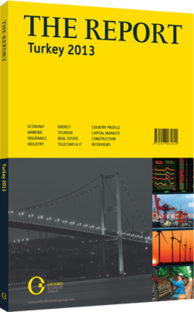OBG talks to Ibrahim Turhan, Chairman and CEO, Borsa İstanbul (BIST)

Interview: Ibrahim Turhan
What impact is Turkey’s credit rating upgrade likely to have on investment activity on the BIST over the short to medium term?
IBRAHIM TURHAN: Many analysts have deemed Turkey an investment grade country for several years, especially since 2010. Since that year, the lira has been one of the least volatile emerging markets currencies and real interest rates have fallen to historic lows. These developments, along with Republic’s robust growth record and sound policy making in the face of adverse external conditions, have inspired confidence in the domestic market.
In 2012 Fitch took the first step to close the gap between market reality and the ratings houses, and we expect other houses to follow suit in 2013. If these agencies do not correct their position it will become more difficult for them to explain why Turkey now has lower borrowing costs than many advanced economies.
Still, the upgrade was not just a symbolic gesture. After this decision, we anticipate an increase in foreign capital inflows, in part because many international funds have to follow regulations that require them to enter only markets that have investment grade status. In fact, many funds require two investment grade ratings, so the next upgrade will be equally important. The challenge is not convincing investors that Turkey is an attractive market; rather, the larger issue is that our capital markets do not offer enough investment tools.
How strong is demand for greater product variety on the BIST, and what is being done to satisfy it?
TURHAN: Very strong. This is why we have been working to deepen the market by expanding the range of investable assets. In late December 2012, for example, we introduced single stock options and futures. During the first quarter of 2013, we will launch index options and futures, with other new instruments set to follow. Indeed, ongoing production differentiation will be critical for the capital markets in Turkey, partly because instrument diversity can create synergies for investors. That is, differentiation gives investors the opportunity to create mixed portfolios that include options and futures, as well as structured products like certificates, warrants, and contracts for difference.
What is more, new asset classes will lead to stronger risk management practices. Currently, some investors interested in Turkish debt instruments, for example, stand on the sidelines because they do not want to carry these positions without hedging. In the past, offsetting risk in Turkey through derivatives was impossible, but now the availability of such instruments will allow investors to take opposite positions. In turn, this will increase the safety of their investments and give them more confidence to participate in the market.
Along with diversification, attracting more institutional investors is key, because institutionalisation is the only way to create an efficient market. Of course, individual investors generate continuous flows of liquidity. However, the ever-increasing complexity of capital markets, which creates immense challenges for both investors and regulators, can only be managed in some cases by institutional funds with deep technical knowledge and expertise. As such, their presence makes capital market participation more safe and secure all around.
How can the capital markets regulators in Turkey encourage local companies to list on the exchange?
TURHAN: Out of the 1000 largest companies in Turkey, only 124 are listed on the exchange. Out of the top 500, only 88 are listed. There are two possible explanations for this: first, Turkish firms don’t need more capital; second, they are not aware of the benefits that come from a public offering. We believe that the latter explanation is the most plausible; consequently, we have begun holding meetings with the largest unlisted firms to encourage them to enter the market.
By 2023, Turkey aims to become one of the world’s 10 largest economies; this entails a domestic investment rate of 25% and greater participation in the capital markets, especially within an environment where bank lending from advanced economies is declining.
You have reached the limit of premium articles you can view for free.
Choose from the options below to purchase print or digital editions of our Reports. You can also purchase a website subscription giving you unlimited access to all of our Reports online for 12 months.
If you have already purchased this Report or have a website subscription, please login to continue.

